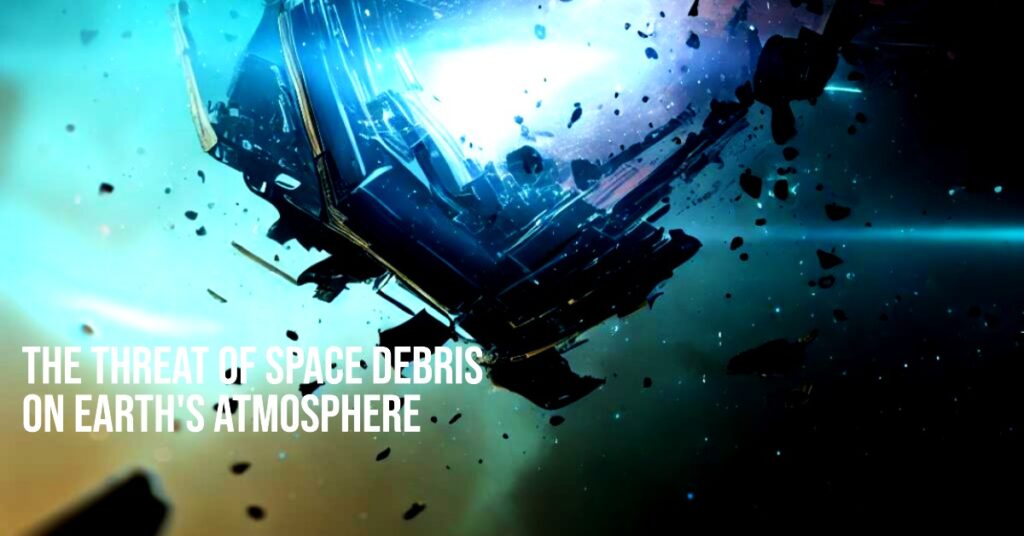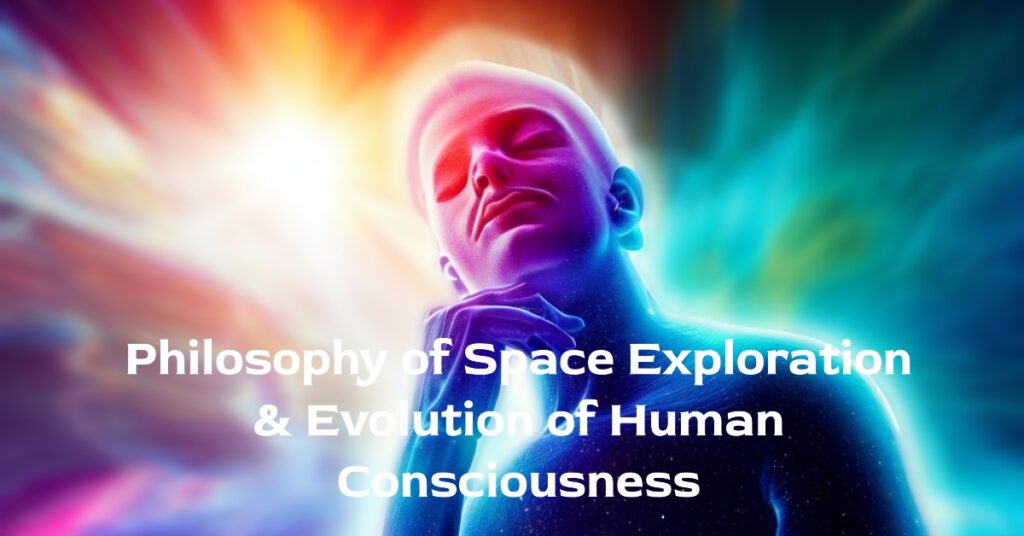
The Environmental Impact of Space Debris on Earth’s Atmosphere
Space debris, also known as orbital debris or space junk, refers to man-made and natural objects orbiting around our planet. These objects range in size from small fragments of paint to entire rocket stages that have been abandoned after completing their missions.
With the growing number of satellites and rockets being launched into space, the amount of space debris has increased significantly over the years. It poses a significant threat not only to space exploration but also to our planet’s environment.
The Dangers of Space Debris
The impact that space debris can have on Earth’s atmosphere is significant. One of the most dangerous aspects is the risk of collisions with satellites and spacecraft that are used for communication, navigation, and weather monitoring, among other things. Even small pieces of debris can cause damage or disable these important assets that are critical for modern society.
In addition to damaging operational satellites and spacecraft, collisions between pieces of debris can cause more fragments to be created in a phenomenon known as “collisional cascading”. This process could lead to an exponential growth in the amount of debris and contribute further to the problem.
The Impact on Earth’s Environment
As if causing damage in space wasn’t enough already, space debris can also create environmental problems on Earth. When larger objects fall back into our atmosphere, they often break up into smaller pieces that scatter across different parts of the globe.
These fragments can cause harm by falling on inhabited areas or polluting oceans. Furthermore, dust particles from meteoroids and other natural sources can accumulate in our upper atmosphere over time – potentially blocking sunlight or causing other atmospheric changes that may affect climate patterns across certain regions.
With these dangers in mind, it is clear that we need stronger measures at both the international and national levels to combat the growing problem of space debris. In the following sections, we’ll explore the different types of space debris that exist and their impact on our environment.
Types of Space Debris
Space debris can be classified into two categories: natural debris and human-made debris.
Natural Debris (Meteoroids)
Natural debris, also known as meteoroids, are small rocks or dust particles that come from space. They are created by the breaking up of comets, asteroids, or other celestial bodies.
These meteoroids enter the Earth’s atmosphere at high speeds and burn up due to the intense heat generated by friction with the air. Most meteoroids are very small and pose no threat to human life or infrastructure on the ground.
However, larger meteoroids can cause significant damage if they reach the Earth’s surface. For example, in 2013 a meteoroid exploded over Chelyabinsk, Russia, injuring more than 1,000 people and damaging buildings.
Human-Made Debris (Satellites, Rocket Stages, etc.)
The majority of space debris is human-made and comes from satellites launched into orbit around Earth. These satellites can break down over time due to a variety of factors, such as radiation exposure or collisions with other objects in space. Rocket stages also contribute to space debris as they are discarded once their fuel is spent after launching a satellite or spacecraft into orbit.
These pieces of debris can remain in orbit for decades before falling back to Earth. In addition to satellites and rocket stages, other sources of human-made debris include discarded hardware such as tools used during spacewalks and lost equipment accidentally released during missions.
The Effects of Space Debris on Earth’s Atmosphere
Increased Risk of Collisions with Spacecraft and Satellites
Space debris, both natural and human-made, can pose a significant risk to spacecraft and satellites orbiting Earth. The high-speed collisions with these objects can cause extensive damage to the equipment on board, leading to costly repairs or even the complete loss of the spacecraft. The threat of collisions has become increasingly severe as more and more countries launch satellites into space for communication, navigation, weather forecasting, and other purposes.
Creation of More Debris Through Collisions
Another major problem associated with space debris is that it can create more debris through collisions. When two objects collide in orbit, they break apart into smaller pieces that continue to travel at high speeds around the Earth.
These smaller fragments pose an even greater threat to spacecraft since they are harder to track due to their size and unpredictability in movement. This cycle then perpetuates itself as each collision generates more debris.
Debris Falling Back to Earth Can Cause Damage and Pollution
Space debris that falls back to Earth can cause significant damage and pollution. While most objects burn up upon re-entry into the atmosphere, some larger pieces survive long enough to reach the surface.
In 1979, for example, Skylab’s uncontrolled re-entry resulted in several large pieces crashing down onto Western Australia, causing alarm among local residents but luckily causing no injuries or fatalities. The environmental impact of space debris is a growing concern as we continue our presence in space exploration.
With an estimated 5000 tons of debris currently orbiting our planet, we have already experienced some close calls, such as shuttle windows damaged by tiny flecks traveling at 20 times the speed of sound, which shows how deadly even small pieces can be. It is important now more than ever for nations to work together to come up with solutions for tracking, monitoring, and removing debris from our skies.
The Environmental Impact of Space Debris on Earth’s Atmosphere
Increased Radiation Exposure for Astronauts and Satellites
Space debris can cause an increase in radiation exposure for astronauts and satellites. This is because debris can collide with spacecraft and satellites, causing damage to the protective layers that shield them from high levels of radiation.
When these layers are damaged, astronauts and satellites become more vulnerable to exposure from cosmic rays, solar flares, and other forms of radiation. The increased exposure to radiation can lead to a number of health problems for astronauts who spend long periods of time in space.
These include an increased risk of cataracts, cancer, and other types of radiation sickness. Satellites are also affected by this increase in radiation exposure, as it can cause malfunctions or even complete failures in their systems.
Debris Can Affect the Ozone Layer
Space debris can also have an impact on Earth’s ozone layer. The ozone layer is a layer of gas that surrounds the Earth and protects it from harmful ultraviolet (UV) rays emitted by the sun.
When space debris enters the atmosphere, it releases chemicals that react with ozone molecules to break them down. This process reduces the amount of ozone in the atmosphere, which can lead to an increased risk of skin cancer and other health problems.
The impact on the ozone layer is one reason why reducing space debris is so important. If we continue to allow debris to accumulate in space without proper disposal methods or removal techniques, we could be putting our planet at risk.
Debris Can Contribute to Climate Change
Another environmental impact of space debris on Earth’s atmosphere is its contribution to climate change.
Space debris contains a variety of materials, such as metals, plastics, and rubber, that absorb heat from sunlight differently than natural surfaces like water or vegetation.
As more debris accumulates in space, it can cause changes in the Earth’s radiation balance, leading to changes in temperature and weather patterns. Additionally, debris falling back to Earth can cause pollution and release greenhouse gases into the atmosphere.
This contributes to climate change and its effects, such as sea level rise, extreme weather events, and disrupted ecosystems. Space debris is not just a problem for space exploration but also has significant environmental impacts on Earth’s atmosphere.
The increased radiation exposure for astronauts and satellites, the impact on the ozone layer, and contribution to climate change are serious concerns that need to be addressed through improved tracking methods and removal techniques. It is our responsibility as inhabitants of this planet to ensure that we are taking care of our environment both on Earth and beyond.
Current Efforts to Mitigate the Impact of Space Debris
Tracking and Monitoring Systems:
One of the most important ways in which we can mitigate the impact of space debris is through tracking and monitoring systems. These systems help us keep track of all the debris that is floating around in space, which allows us to avoid it or take measures to protect ourselves from it.
There are many different types of tracking and monitoring systems that are used today, including radar, telescopes, and even cameras. One example of a tracking system that is currently used is the United States Air Force Space Surveillance System (SSS).
This system uses radar to detect objects in space that are larger than 10 centimeters. Once these objects are detected, their orbits are carefully tracked so that they can be avoided or removed if necessary.
Spacecraft Design Improvements:
Another way in which we can mitigate the impact of space debris is through spacecraft design improvements.
By designing spacecraft with materials that are less likely to break apart or cause damage when struck by debris, we can reduce the amount of debris that enters Earth’s atmosphere. For example, NASA has developed a material called Nextel, which is made out of ceramic fibers and has been shown to be much more resistant to impacts from small particles than other materials commonly used in spacecraft construction.
Removal Techniques:
There are various techniques being developed for removing space debris from Earth’s orbit altogether. One such technique involves using nets or harpoons to capture larger pieces of debris and bring them back down to Earth, where they will burn up upon reentry.
Another technique involves using lasers or ion beams to push smaller pieces of debris off course so that they will burn up upon reentry as well. While these techniques are still being refined and tested, they hold great promise for reducing the amount of debris in Earth’s orbit and mitigating its impact on our environment.
The issue of space debris is a serious one that requires careful attention and ongoing efforts to mitigate its impact on our planet. Through tracking and monitoring systems, spacecraft design improvements, and removal techniques, we can work towards a cleaner, safer future for all.
TL;DR
- Space debris poses threats to atmosphere, environment, and astronauts.
- Debris causes more debris, radiation exposure, and contributes to climate change.
- Efforts to mitigate space debris include tracking, improved spacecraft design, and removal techniques.
- Sustainable practices must be prioritized in space exploration.
- Proper disposal methods and debris-minimizing spacecraft design are key.
- Development of effective debris removal techniques is essential.
- NASA and companies are working on innovative solutions like robotic arms, nets, and drag sails.
- Responsible and sustainable space practices are crucial for Earth and future generations of space explorers.

C M, a seasoned editor, journalist, and consultant, is deeply fascinated by the convergence of technology, space, and the future of humanity.
With a particular interest in transhumanity, futurology, and the philosophical and ethical dimensions of these domains, C M serves as the lead contributor to SpaceSpotlight and TranscendSphere.
When not penning insightful articles on these rapidly evolving fields, C M indulges in their love for podcasts and books, proudly embracing their status as a ‘Happy Nerd Extraordinaire!’


